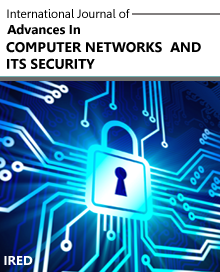Analysis of a LAN under Different Ethernet Wiring Standards with Variation in Time and Components
Author(s) : MOHAMMAD WAZID, R H GOUDAR
 Abstract
Abstract
In this paper we simulate a campus LAN using IT Guru Opnet 9.1 and then we calculate the performance of this network under 10BaseT and 100BaseT Ethernet wiring standards with varying time and components (i.e. no. of hubs) and finally we compare the results i.e. which standard perform better for which time duration and for how many number of components. We find that numbers of collision counts at hubs are always more in 10BaseT, because of the nature of this standard. Hubs are always more utilized in 10BaseT, because of more retransmission attempts due to high number of collisions in 10BaseT. Hubs filter no traffic for 10BaseT but for 100BaseT they filter some traffic and perform well with increasing time. When we increase the time not the components the performance of switch is good under 100BaseT because it filter more traffic with increasing time as compare to 10BaseT. When we increase number of components and time period in 100BaseT, it also performs well. In this case when time is 2 minutes its performance with four components (hubs) is worst but if we start increasing time the performance is going to improve. Its improvement rate is greater than 10BaseT standard. So finally we come to a point that if number of components (hubs) are fixed and network is used for long time then we have to use 100BaseT standard in the implementation of LAN, it will give you good performance. But if more numbers of hubs are required and the network is used for long time, then in those situations always use 100BaseT standard, because it will give you good performance. In the same situation if the network is used for short time, then always prefer 10BaseT standard, it will give you better performance as compare to 100BaseT standard. To our best knowledge this is the first paper that analyzes the performance of a campus LAN under different Ethernet wiring standards with these assumptions.
 Full Paper PDF
Full Paper PDF
